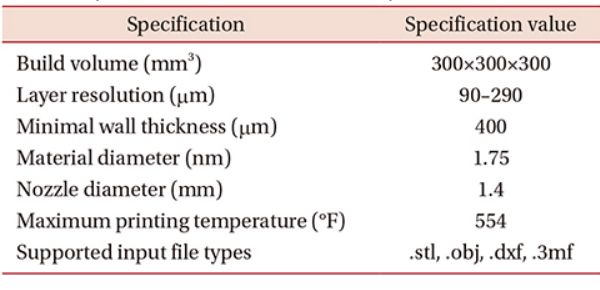In the recently published ‘Radiological Characteristics of Materials Used in 3-Dimensional Printing with Various Infill Densities,’ researchers from the Veterans Health Service Medical Center in Seoul, Korea are assessing new materials for 3D printing.
With a focus on how infill densities affect 3D printing techniques, the research team considered a wide variety of materials, evaluated by examining their Hounsfield units—a measurement commonly used in the radiology field to measure radio density.
In this study, the researchers are even more specifically concerned with radiation oncology and the fabrication of improved compensators—tools that help target the exact areas where radiation is to be delivered to tumors. The key is to kill the tumor while preventing as much of the surrounding organs as possible from being exposed to radiation.
The technology of 3D printing offers great results in the medical field today by way of 3D printed medical models, devices like implants, prosthetics, and more, and a variety of guides. Here, metal compensators are fabricated after being completely customized to the patient’s shape, refining the uniformity of dosage—and offering an improvement over conventional methods.
3D printed models may also be used to target the radiation at the skin’s surface. The researchers point out that many efforts have been made so far to create better quality assurance in radiation therapy too by making phantoms, derived from CD data converted into 3D printing files.
While 3D printers play an obvious and enormous role in digital fabrication, the science of materials is one of great study today and of critical importance in making medical models and devices.
Six different materials were assessed regarding the effects of infill density with a Zortrax M300 Plus:
- ABS
- ULTRAT
- HIPS
- PETG
- PLA
- FLEX
With Z-suite software designed for the Zortrax printer, the researchers could print with various infill densities, allowing them to make a variety of samples: 4×4×2 cm rectangles made from HIPS and PLA
For the study experiments, samples were created as follows:
“… six printing materials, each at an infill density of 60%. ABS, ULTRAT, HIPS, PETG, PLA, and FLEX had HU values of −535±12, −557±10, −542±7, −508±20, −530±25, and −633±15, respectively. The HU values were similar regardless of the specific density of the materials.”

Correlations between Hounsfield unit (HUs) and infill density values for high impact polystyrene (HIPS) and polylactic acid (PLA) are plotted with dashed lines, respectively. Polynomial fitting curves for these correlations for HIPS and PLA are plotted with solid lines, respectively.
Values of HIPS and PLA were evaluated, with the scientists considering also how long it took to 3D print each material at a specific infill density, as follows:
- Average printing time of 32 minutes with infill density of 10%
- Average printing time of 12 hours and 45 minutes with infill density of 100%
“Considering that the volume of each prepared cube was 32 m3, a printing time of 12 hours and 45 minutes could be considered quite wasteful. Using 100% infill density should therefore be carefully considered while manufacturing patient-specific human phantoms,” concluded the researchers.
“The results suggest that using optimized infill densities will help improve the quality of radiation therapy by producing customized instruments for each field of radiation therapy.”

(a) High impact polystyrene material with infill density values from 10% to 100% and (b) computed tomography (CT) images in coronal view obtained by the Brilliance CT Big Bore™.
What do you think of this news? Let us know your thoughts! Join the discussion of this and other 3D printing topics at 3DPrintBoard.com.
Subscribe to Our Email Newsletter
Stay up-to-date on all the latest news from the 3D printing industry and receive information and offers from third party vendors.
You May Also Like
Profiling a Construction 3D Printing Pioneer: US Army Corps of Engineers’ Megan Kreiger
The world of construction 3D printing is still so new that the true experts can probably be counted on two hands. Among them is Megan Kreiger, Portfolio Manager of Additive...
US Army Corps of Engineers Taps Lincoln Electric & Eaton for Largest 3D Printed US Civil Works Part
The Soo Locks sit on the US-Canadian border, enabling maritime travel between Lake Superior and Lake Huron, from which ships can reach the rest of the Great Lakes. Crafts carrying...
Construction 3D Printing CEO Reflects on Being Female in Construction
Natalie Wadley, CEO of ChangeMaker3D, could hear the words of her daughter sitting next to her resounding in her head. “Mum, MUM, you’ve won!” Wadley had just won the prestigious...
1Print to Commercialize 3D Printed Coastal Resilience Solutions
1Print, a company that specializes in deploying additive construction (AC) for infrastructure projects, has entered an agreement with the University of Miami (UM) to accelerate commercialization of the SEAHIVE shoreline...

































